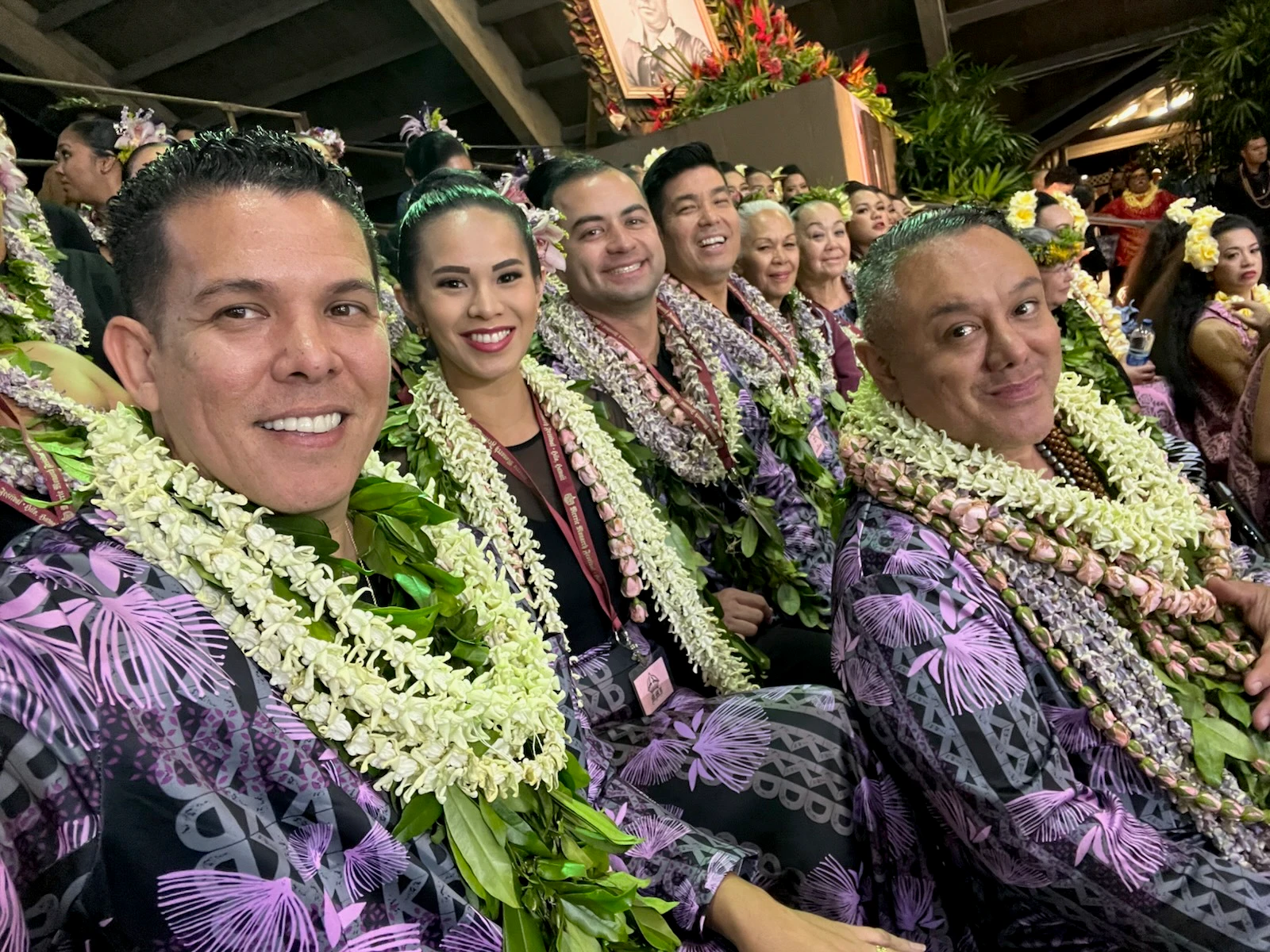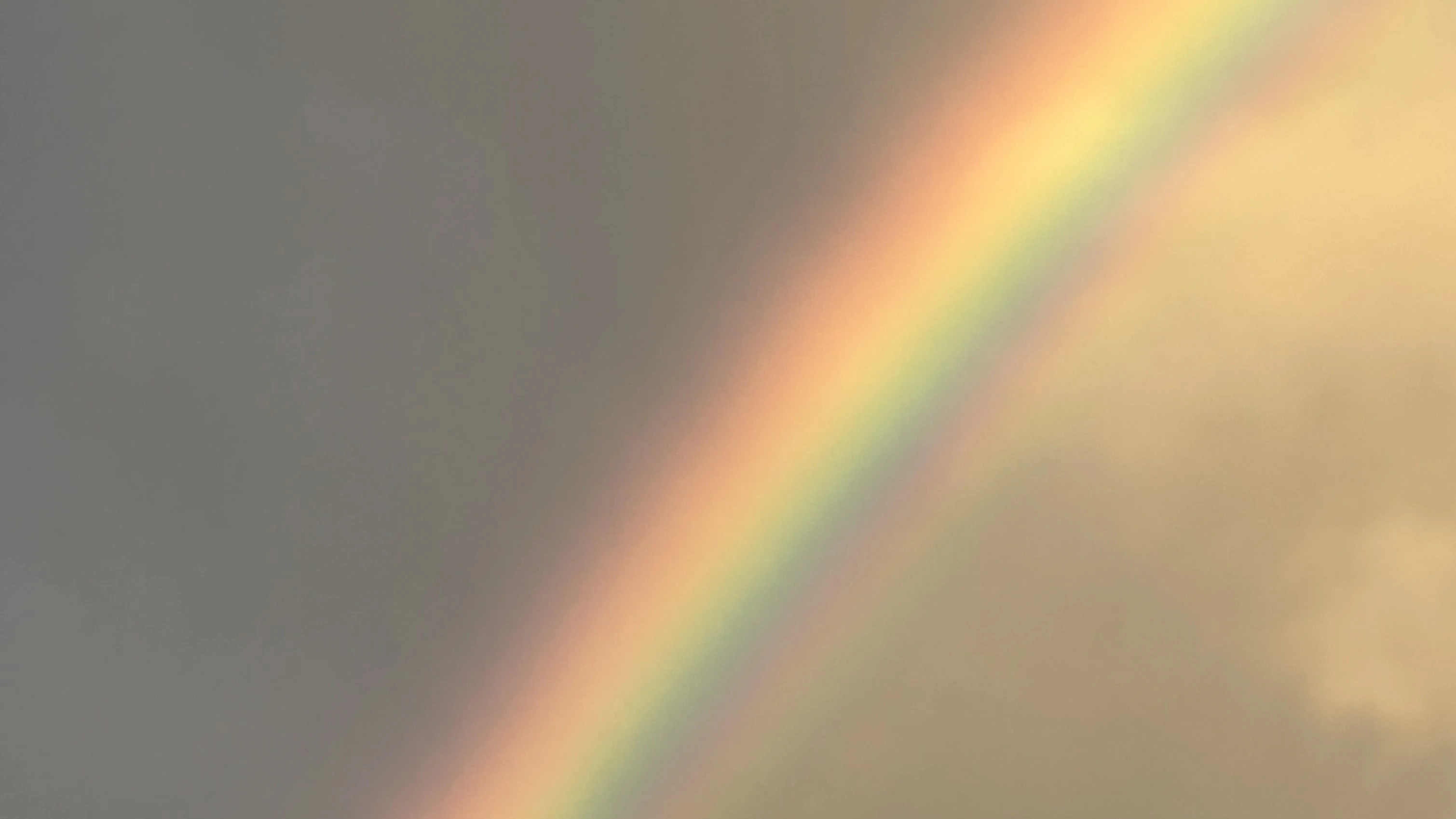Kamaka Kūkona is a fashion designer and Nā Hōkū Hanohano award-winning singer and songwriter. He is also the kumu hula for the Wailuku-based Hālau o Ka Hanu Lehua, which has eight kāne performing at Merrie Monarch this week in its “last performance there for a while,” the kuma hula told Aloha State Daily. The kāne will perform kahiko on Friday, April 25, and ʻauana on Saturday, April 26.
Merrie Monarch is an invite-only hula competition which draws audiences from around the world and is televised for those who are not able to attend in person. This year, competitions include Miss Aloha Hula on Thursday, April 24, group kahiko for kāne and wahine on Friday, April 25, and group ʻauana for kāne and wahine on Saturday, April 26.
Allan B. Cool-Peʻa will be one of the eight ʻōlapa, or dancers, who will be taking the stage for Hālau o Ka Hanu Lehua. In previous years, he has been a drummer, or hoʻopaʻa. He has also worked backstage as a make-up and hair artist for various hālau, including Hālau Na Lei O Kaholoku, led by Kumu Hula Nani Lim-Yap.

This year, he will be one of the dancers on stage. ʻŌlapa go through years of training, “but no one really knows if they make the line until it gets closer to the actual competition,” he added.
“It's just an honor to be able to be given this kuleana by our kumu hula and to have the trust by our kumu hula to share the stories of our ancestors on the world's most prestigious hula stage,” Cool-Peʻa told Aloha State Daily.
Back to its roots
This year, Hālau o Ka Hanu Lehua will honor Queen Kapiʻolani, the wife of King Kalākaua — the Merrie Monarch for whom the festival was named — in its kahiko presentation, Kūkona said.
“Also for our ʻauana presentation on Saturday, we are doing the same song that we did when we first entered [Merrie Monarch] in 2007 because this is our last performance there for a while,” the kuma hula added.
It has been 18 years since the hālau performed a dance to this mele and this is an opportunity to “bring everything full circle,” he said.
“There's so many facets of preparation that take place that people do not see,” Kūkona said. “All the way down to preparing rides. Who's driving the trucks to pick the ti leaves? Who's picking up who? Where are we meeting? How many ti leaves does each dancer need?”
For kahiko night, the dancers will wear fresh ʻilima lei, which involves thousands of flowers sewn together, Cool-Peʻa told Aloha State Daily.
“You can't go to the store and find it,” he said. “You have to know a master lei maker who specializes in that specific type of lei that represents our aliʻi.”
When asked about the practice schedule looks like the week before the festival, Kūkona was quick to respond.
“Every day until they get it right,” he said. “Or until I feel like that's as good as it's gonna get until the real thing.”
ʻLifelong journey’
Kūkona comes from generations of hula dancers. By the time he was two years old, he was copying dance moves from his mother and cousin. At age five, he told his family he wanted to be a kumu hula.
“It has been a lifelong journey,” he said.
He commends his fellow kumu hula on how much they “invest into our students, into hula and into our culture,” he said. Among other responsibilities, kumu hula often absorb any outstanding costs of getting their dancers to the festival if fundraising comes up short or dancers are not able to pay.
“And that's one of the things that we really don't like to talk about,” Kūkona said. “But I'm bringing to the forefront the very fact that we invest everything — our lives — into hula, including the financial aspect.”
Kūkona shared his advice for dancers next week.
“When you know the hula and the mele that you need to know inside and out like with the back of your hand that allows you to leave it all on the stage,” he said. “That's when you are able to give it your all. And it shows. There's a level of confidence that occurs when a dancer is fully prepared.”
Each hālau gets up to seven minutes on stage. For Cool-Peʻa, the best part of Merrie Monarch is the journey there, he said.
“You go up there, you have your seven minutes, and you're done, right?” Cool-Peʻa said. “But it took months and weeks and years to prepare for these seven minutes, and I think that's what the dancers remember. They remember making the skirts, making the leis, going into the forest, going to everyone's house to pick ti leaves.”
Being part of a hālau teaches skills which are important for life, he added.
“Hālau teaches you life lessons so everything we learned in hālau it's really transferred into our day-to-day life,” he said. “Hālau is kind of built not to make you an amazing dancer — ʻōlapa — but to be an amazing human being so when you're faced with problems or challenges, you're prepared to solve them because you've already been trained through the hālau.”
Katie Helland can be reached at katie@alohastatedaily.com.





